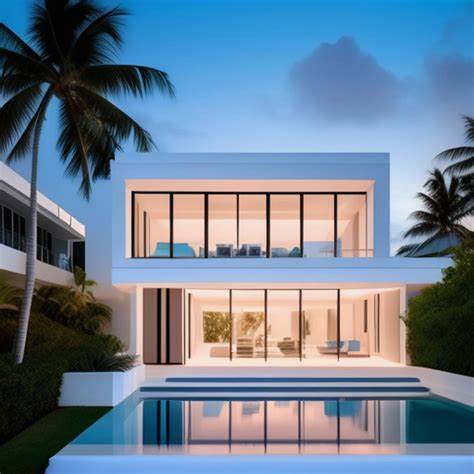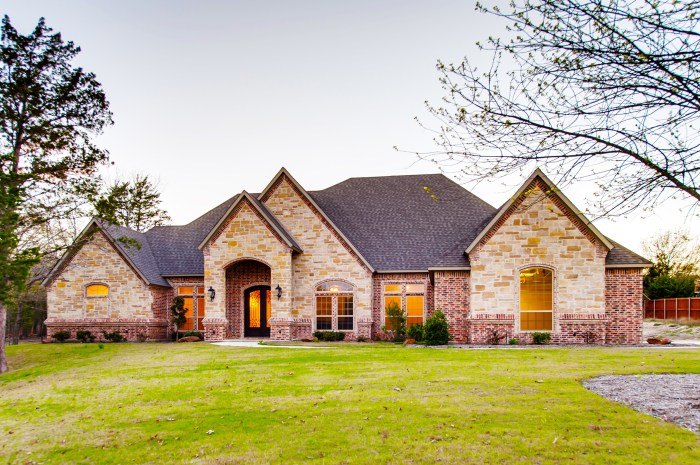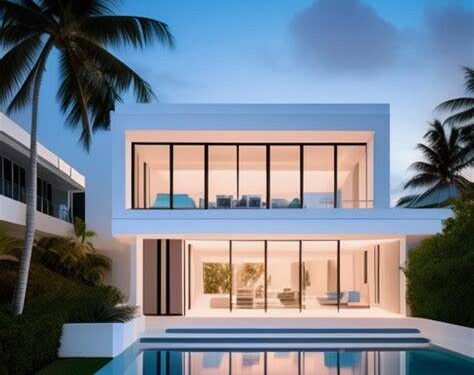
Custom home exteriors set the stage for a one-of-a-kind living experience, where personal style meets architectural innovation. From modern marvels to traditional charm, the possibilities are endless. Let's delve into the world of custom home exteriors and discover the key elements that make each home unique.
As we journey through different styles, materials, and design elements, we uncover the artistry and functionality behind creating a home that not only stands out but also reflects the essence of its owners.
Types of Custom Home Exteriors

When it comes to custom home exteriors, there are various styles and materials to choose from to create a unique look that suits your taste and preferences. Customization allows homeowners to tailor the exterior design of their homes to reflect their personality and enhance curb appeal.
Styles of Custom Home Exteriors
- Modern: Characterized by clean lines, large windows, and minimalistic design elements.
- Traditional: Features classic architectural details, such as gable roofs, columns, and symmetrical facades.
- Minimalist: Emphasizes simplicity and functionality, with a focus on neutral colors and sleek finishes.
Popular Materials for Custom Home Exteriors
- Brick: Provides a timeless and durable option for exteriors, offering a classic look that can be customized with different patterns and colors.
- Wood: Adds warmth and natural beauty to a home, with options for various finishes and treatments to suit different styles.
- Stucco: Offers a versatile and low-maintenance choice, available in different textures and colors for a customized appearance.
Importance of Customization in Exterior Design
Customizing the exterior of your home allows you to create a unique and personalized look that sets your property apart from others. It also gives you the opportunity to express your style preferences and make a statement about your home's design.
With customization, you can enhance the overall aesthetics of your home while ensuring it reflects your personality and lifestyle.
Custom Exterior Design Elements
Landscaping plays a crucial role in enhancing custom home exteriors. It not only adds curb appeal but also creates a harmonious connection between the house and its surroundings. From lush gardens to well-manicured lawns, landscaping can truly transform the overall look and feel of a home.Unique architectural features are essential for creating personalized exteriors that stand out.
Elements such as custom-built pergolas, intricate woodwork, or modern steel accents can add character and individuality to a home. These features not only add visual interest but also reflect the homeowner's style and personality.Color schemes are another important aspect of custom home exteriors.
The right combination of colors can highlight architectural details, create visual contrast, and evoke a specific mood or atmosphere
. For example, a neutral palette with pops of vibrant colors can add energy and personality to a modern home, while a monochromatic scheme can lend a sense of sophistication and elegance to a traditional house.
Eco-Friendly Approaches in Custom Exteriors
When it comes to designing custom home exteriors, incorporating eco-friendly approaches is not only beneficial for the environment but also for the homeowners. By using sustainable materials and energy-efficient design options, custom homes can be both beautiful and environmentally friendly.
Sustainable Materials in Custom Exteriors
One way to create eco-friendly custom exteriors is by using sustainable materials such as reclaimed wood, recycled glass, and bamboo. These materials are not only environmentally friendly but also durable and stylish, adding a unique touch to the exterior design.
Energy-Efficient Design Options
Another approach to eco-friendly custom exteriors is through energy-efficient design options. This can include installing solar panels, using energy-efficient windows and doors, and incorporating proper insulation to reduce energy consumption and lower utility bills.
Benefits of Eco-Friendly Choices
Choosing eco-friendly options for custom home exteriors not only helps in reducing the carbon footprint but also improves indoor air quality, reduces maintenance costs, and increases the overall value of the home. It creates a healthier and more sustainable living environment for the homeowners.
Cost Considerations for Custom Exterior Projects
When planning custom exterior projects for your home, it is essential to consider the cost implications. Various factors can influence the overall cost of custom exterior designs, including the materials used, the size of the project, labor costs, and any additional features or customizations.
To ensure that your custom exterior renovation stays within budget, it is important to carefully plan and budget for the project.
Factors Influencing Cost of Custom Exterior Designs
- The choice of materials: High-end materials such as natural stone or exotic woods can significantly increase the cost of the project compared to more affordable options like vinyl siding or composite materials.
- Size and complexity of the project: Larger or more complex custom exterior designs will require more materials and labor, leading to higher costs.
- Labor costs: Skilled labor is essential for custom exterior projects, and the cost of labor can vary depending on the expertise and experience of the workers.
- Additional features and customizations: Adding unique features or custom elements to your exterior design can increase costs, so it is important to consider these aspects when budgeting for the project.
Tips on Budgeting for Custom Home Exterior Renovations
- Set a realistic budget: Determine how much you can afford to spend on your custom exterior project and prioritize the most important elements within that budget.
- Get multiple quotes: Obtain quotes from different contractors or suppliers to compare pricing and ensure you are getting the best value for your money.
- Consider long-term costs: While it may be tempting to opt for the cheapest materials or labor, it is important to consider the long-term costs and durability of your custom exterior design.
- Plan for unexpected expenses: It is always a good idea to have a contingency fund set aside for any unforeseen expenses that may arise during the project.
Compare Pricing Between Different Custom Exterior Options
- Traditional siding options like vinyl or fiber cement are generally more affordable than custom options such as natural stone or wood.
- Pre-fabricated elements can be a cost-effective alternative to custom-built features, providing a similar aesthetic at a lower price point.
- Energy-efficient materials may have a higher upfront cost but can lead to long-term savings on energy bills, making them a cost-effective option in the long run.
- Working with a reputable contractor or designer can help you navigate the pricing differences between various custom exterior options and choose the best solution for your budget and aesthetic preferences.
Last Recap
In conclusion, custom home exteriors offer a canvas for homeowners to express their individuality and create a space that truly feels like home. From eco-friendly approaches to cost considerations, every aspect plays a crucial role in shaping the perfect exterior.
Embrace the endless possibilities and transform your house into a personalized sanctuary that speaks volumes about who you are.
Query Resolution
What are some popular materials used for custom home exteriors?
Popular materials include vinyl siding, brick, wood, stucco, and stone, each offering unique aesthetics and durability.
How can color schemes enhance a home's exterior?
Color schemes can create visual interest, highlight architectural features, and evoke specific moods or styles, adding personality to the exterior design.
What are some sustainable materials that can be incorporated into custom exteriors?
Sustainable materials like reclaimed wood, recycled metal, and fiber cement siding offer eco-friendly options for custom home exteriors.
How can homeowners budget for custom home exterior renovations?
Homeowners can set a budget by prioritizing essential upgrades, obtaining multiple quotes, and considering long-term maintenance costs to ensure a successful renovation project.
 Custom home exteriors set the stage for a one-of-a-kind living experience, where personal style meets architectural innovation. From modern marvels to traditional charm, the possibilities are endless. Let's delve into the world of custom home exteriors and discover the key elements that make each home unique.
As we journey through different styles, materials, and design elements, we uncover the artistry and functionality behind creating a home that not only stands out but also reflects the essence of its owners.
Custom home exteriors set the stage for a one-of-a-kind living experience, where personal style meets architectural innovation. From modern marvels to traditional charm, the possibilities are endless. Let's delve into the world of custom home exteriors and discover the key elements that make each home unique.
As we journey through different styles, materials, and design elements, we uncover the artistry and functionality behind creating a home that not only stands out but also reflects the essence of its owners.
 When it comes to custom home exteriors, there are various styles and materials to choose from to create a unique look that suits your taste and preferences. Customization allows homeowners to tailor the exterior design of their homes to reflect their personality and enhance curb appeal.
When it comes to custom home exteriors, there are various styles and materials to choose from to create a unique look that suits your taste and preferences. Customization allows homeowners to tailor the exterior design of their homes to reflect their personality and enhance curb appeal.





